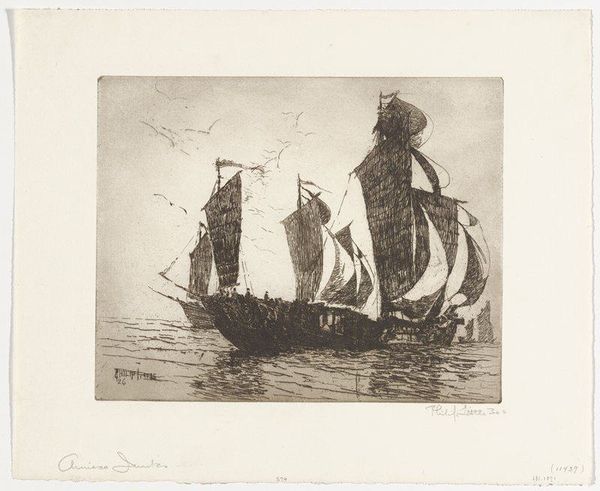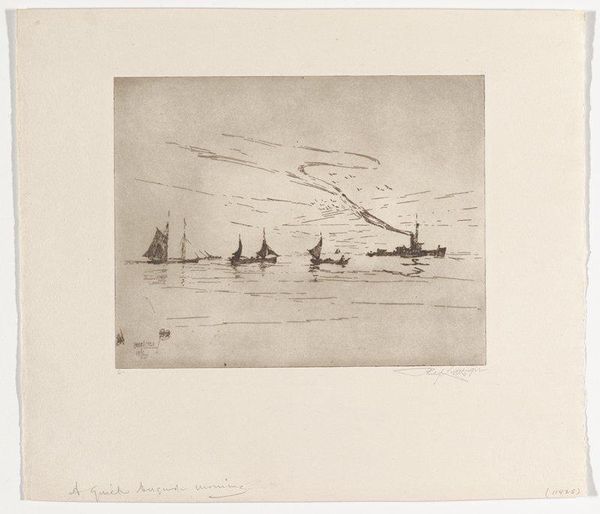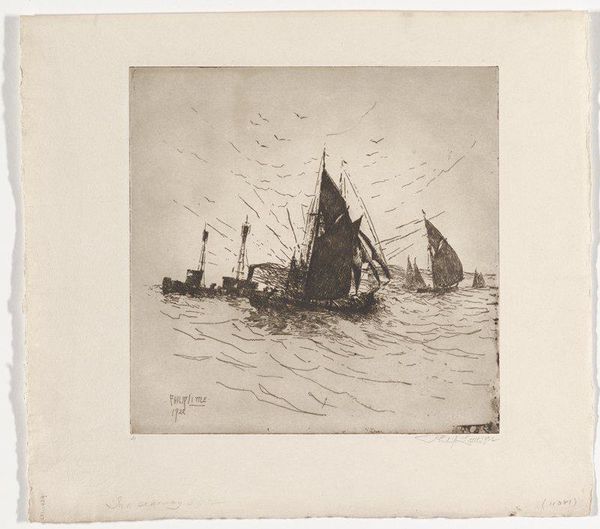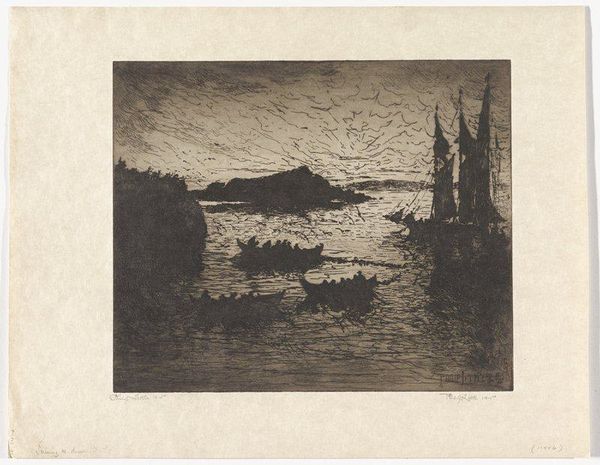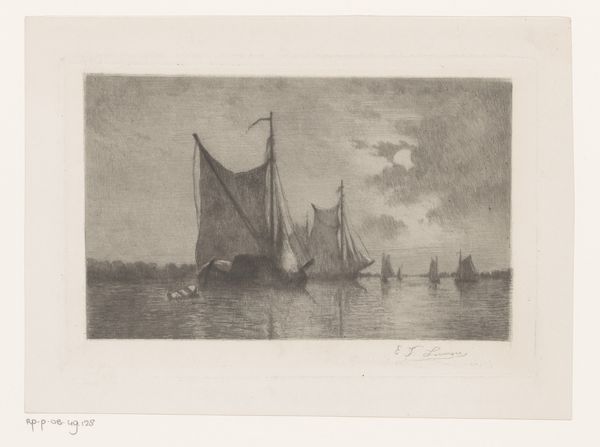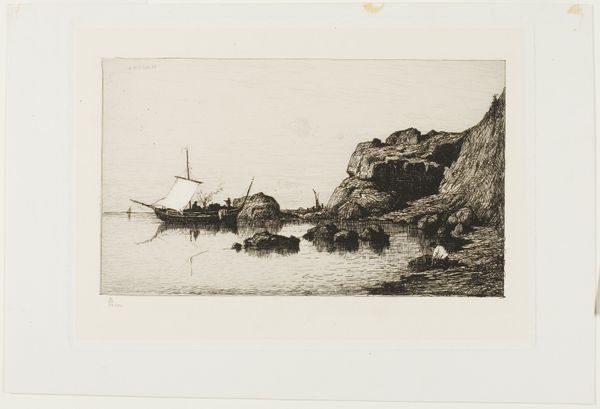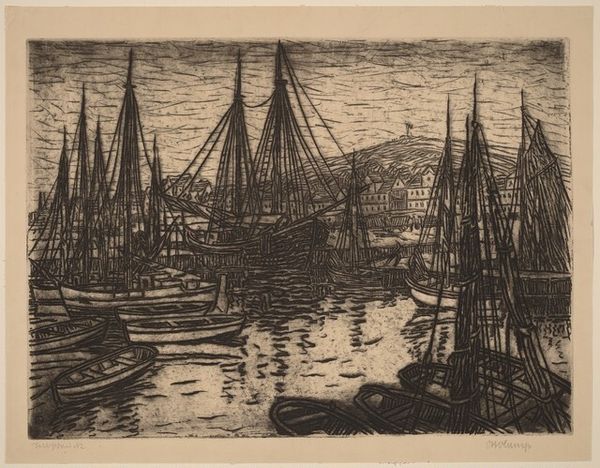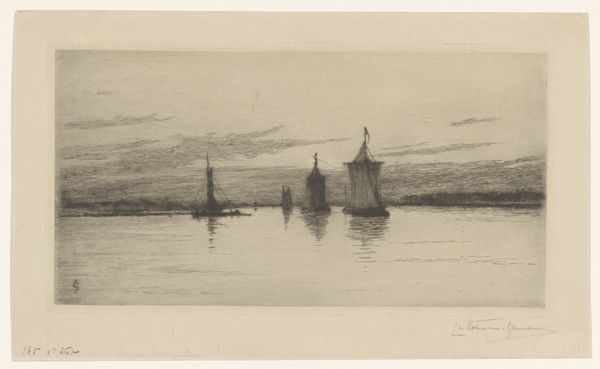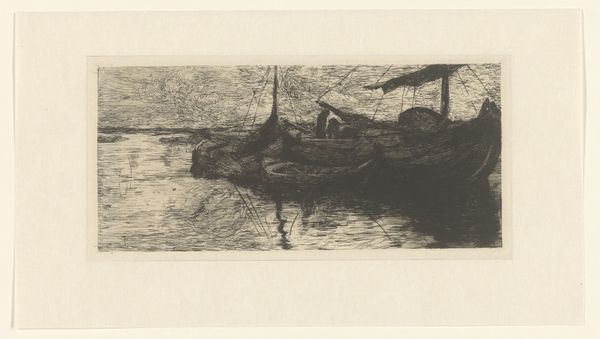
print, etching
# print
#
etching
#
landscape
#
etching
#
genre-painting
#
realism
Dimensions: 7 15/16 x 9 15/16 in. (20.16 x 25.24 cm) (plate)11 x 14 1/4 in. (27.94 x 36.2 cm) (sheet)
Copyright: No Copyright - United States
Editor: Here we have Philip Little's 1920 etching, "Calm of the Morning," currently at the Minneapolis Institute of Art. The scene is dominated by these wonderful blacks and greys depicting sailing boats on a tranquil body of water. I am struck by the contrasts between dark solids and ephemeral, soft details. What are your thoughts on this artwork? Curator: This piece exemplifies the potency of suggestion. Consider the delicate hatching used to create gradations of tone. The artist uses line not to define, but to evoke atmosphere. Observe how the reflections disrupt the solidity of the vessels; Little masterfully integrates object and environment through the materiality of the etching itself. Editor: That's fascinating. I noticed the reflections, but hadn’t considered them disrupting the vessels’ solidity. So, you see that relationship between the physical mark-making and the depicted subject as central to the work's success? Curator: Precisely. The cross-hatching and the drypoint burr contribute a certain roughness that mirrors the raw, industrial energy emanating from the steam and water, while contrasting with the calm it is named for. Ask yourself: Is the calm a real phenomenon, or an aspiration in an era of intense modernization? Editor: I see what you mean. It's like the calm is both there and challenged. It seems I need to study mark-making a little bit more closely! I learned so much! Curator: Indeed. And by appreciating these qualities, we develop a more nuanced understanding of artistic intent and viewer experience.
Comments
No comments
Be the first to comment and join the conversation on the ultimate creative platform.
